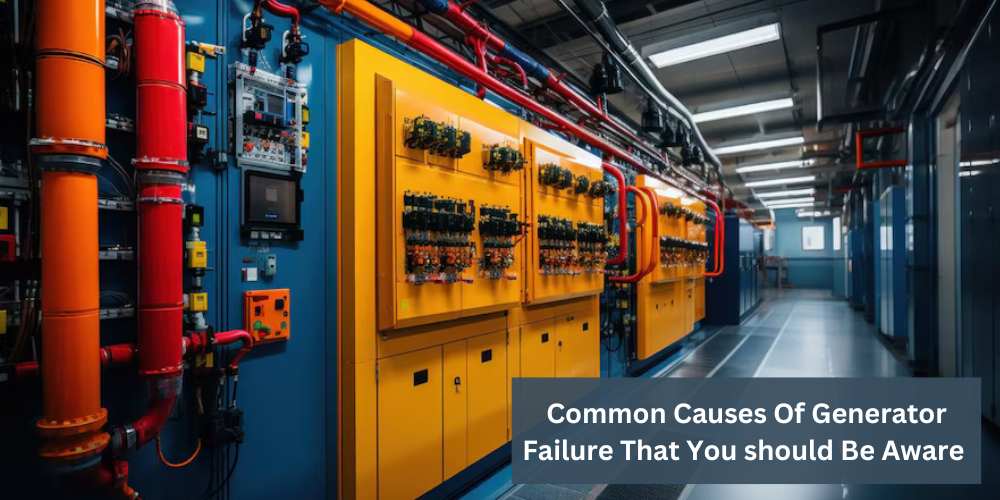Generator Protection Systems – Common Faults and Failure Conditions
Generators play a role, in power generation setups guaranteeing a dependable flow of electricity. However, they are susceptible to various faults and failure conditions that can disrupt operations, cause equipment damage, and result in costly downtime. It is crucial to have protection systems, for generators in place to prevent these problems safeguarding the durability and dependability of your power generation framework. . In this article we will explore the problems and challenges that generators face well as the industrial electrical tools employed to safeguard them.

Types of Generator Faults in Generator Protection Systems
1. Internal Faults
- Stator Winding Faults: Insulation failure within the stator windings can cause short circuits. Protection methods include differential relays that detect discrepancies in current flow, thermal overload relays that monitor temperature, and circuit breakers that disconnect the generator to prevent further damage.
- Rotor Winding Faults: Insulation degradation or mechanical stress in the rotor windings can lead to unbalanced magnetic fields. Protection involves rotor earth fault relays for detecting faults and rotor temperature sensors to prevent overheating.
- Core Faults: Short circuits in the core laminations can cause overheating. Core balance current transformers monitor current imbalances, while temperature monitoring systems ensure the core stays within safe temperature limits.
2. External Faults
- Overvoltage: Excessive voltage may result from load rejection or sudden disconnection. Protection equipment includes overvoltage relays that disconnect the generator in such conditions and surge suppressors that absorb and dissipate transient voltage spikes.
- Undervoltage: Voltage can drop below operational levels due to sudden load increases. Undervoltage relays are used to disconnect the generator when voltage falls below a set threshold.
- Overfrequency and Underfrequency: Deviations in frequency occur due to imbalances between supply and load demand. Frequency relays detect these deviations and correct them to maintain stability.
3. Mechanical Faults
- Bearing Failures: Lubrication issues, misalignment, or wear can lead to bearing failures. Vibration sensors detect abnormal vibrations, and temperature sensors monitor bearing temperatures to prevent overheating.
- Shaft Misalignment: Misalignment causes excessive vibrations and potential mechanical damage. Laser alignment tools ensure precise shaft alignment, and vibration sensors monitor for signs of misalignment.
- Cooling System Failures: Failures in the cooling system can cause overheating and thermal damage. Temperature sensors monitor generator temperatures, and cooling system alarms alert operators to issues with the cooling system.
Common Causes of Generator Failure
Here are some common causes of generator failure that you should be aware of:
Overheating:
Overheating occurs when the generator operates beyond its rated capacity or when cooling systems fail. It can also result from clogged air filters, insufficient ventilation, or excessive ambient temperatures. Overheating can damage the insulation of windings, reduce the efficiency of the generator, and cause permanent damage to critical components.
Prevention:
- Temperature Sensors: Monitor the temperature of the generator and activate cooling systems as needed.
- Regular Maintenance: Ensure that cooling systems are functioning properly and that air filters are clean.
- Cooling System Alarms: Alert operators to potential cooling system failures.
Fault Current:
Fault current can arise from short circuits within the generator or in connected electrical systems. These high currents can cause severe damage if not promptly managed. Fault currents can cause overheating, physical damage to generator components, and fire hazards.
Prevention:
- Circuit Breakers: Automatically disconnect the generator in the event of fault currents to prevent damage.
- Differential Relays: Detect discrepancies in current flow, indicating potential faults.
- Regular Inspections: Ensure all electrical connections and insulation are in good condition.
Motoring:
Motoring occurs when the generator starts operating as a motor rather than a generator, usually due to a loss of prime mover power while the generator remains connected to the power system. This condition can cause mechanical and electrical stress, leading to damage to the generator and prime mover.
Prevention:
- Reverse Power Relays: Detect reverse power flow and disconnect the generator to prevent motoring.
- Proper Maintenance: Regularly inspect and maintain prime movers to ensure they are operating correctly.
Loss of Residual Magnetism:
Generators rely on residual magnetism to initiate the generation of electricity. Loss of residual magnetism can occur due to prolonged inactivity, incorrect storage, or severe operational conditions. Without residual magnetism, the generator cannot build up voltage, leading to failure in generating electricity
Prevention:
- Excitation System Maintenance: Regularly check and maintain the excitation system to ensure it can restore residual magnetism.
- Proper Storage: Store generators in conditions that prevent the loss of residual magnetism.
Under Voltage:
Under voltage occurs when the generator produces voltage below the required level, often due to sudden increases in load, poor regulation, or issues in the excitation system. Under voltage can lead to insufficient power supply to connected equipment, causing operational issues and potential damage to sensitive devices.
Prevention:
- Undervoltage Relays: Monitor voltage levels and disconnect the generator if the voltage falls below a predefined threshold.
- Voltage Regulators: Ensure the generator produces stable voltage by adjusting the excitation current.
- Regular Testing: Periodically test the generator’s voltage regulation capabilities.
Investing in comprehensive generator protection systems is important for maintaining the health and performance of your power generation infrastructure. Regular maintenance and real-time monitoring are key to preventing failures and ensuring uninterrupted power supply.
Looking for reliable usable equipment in Generator Protection Systems? Explore our range of advanced circuit breakers other electrical power equipment that safeguard your power generation infrastructure. Contact us today for a consultation and ensure your generators are protected against all potential faults and failures.